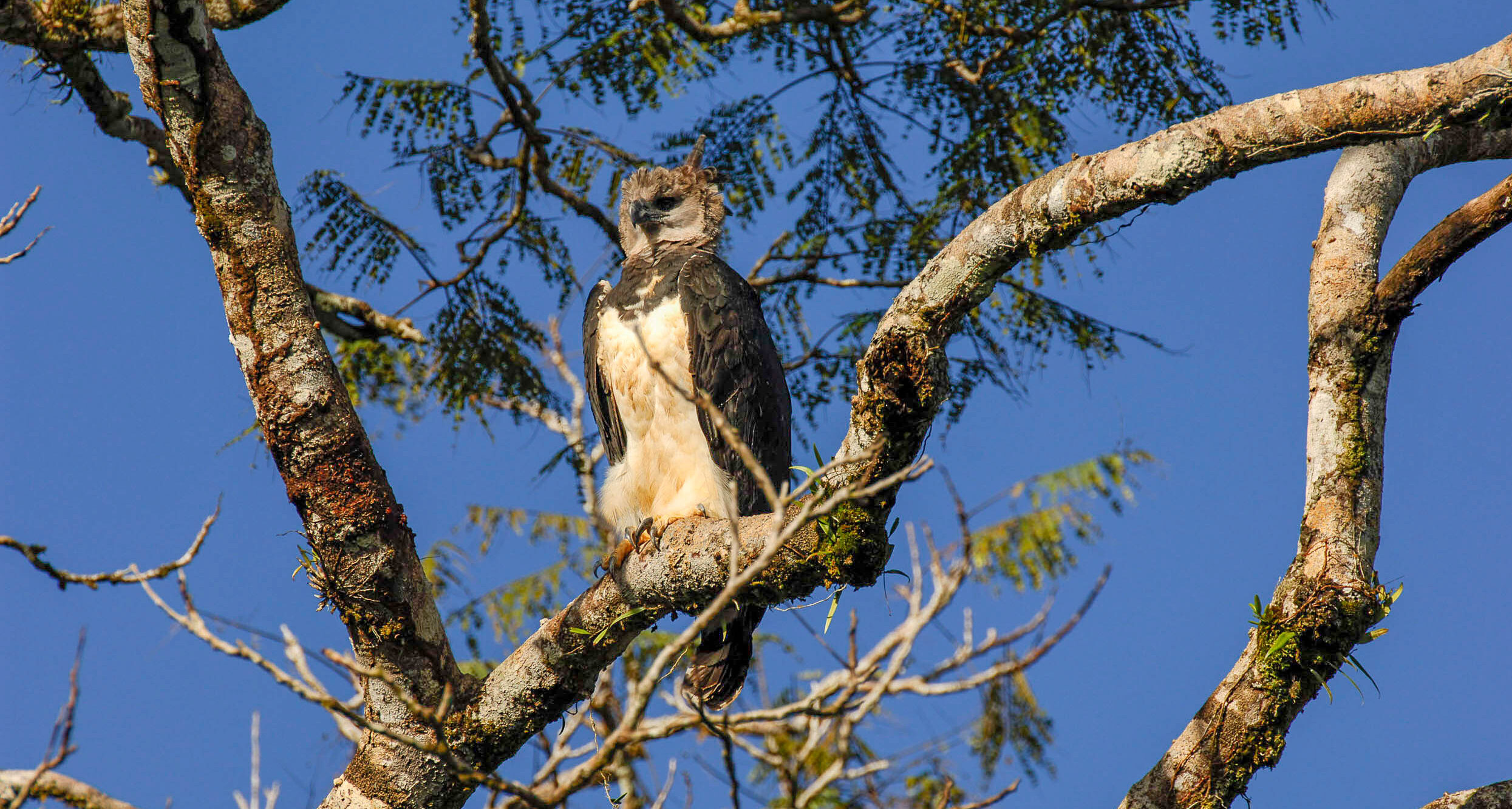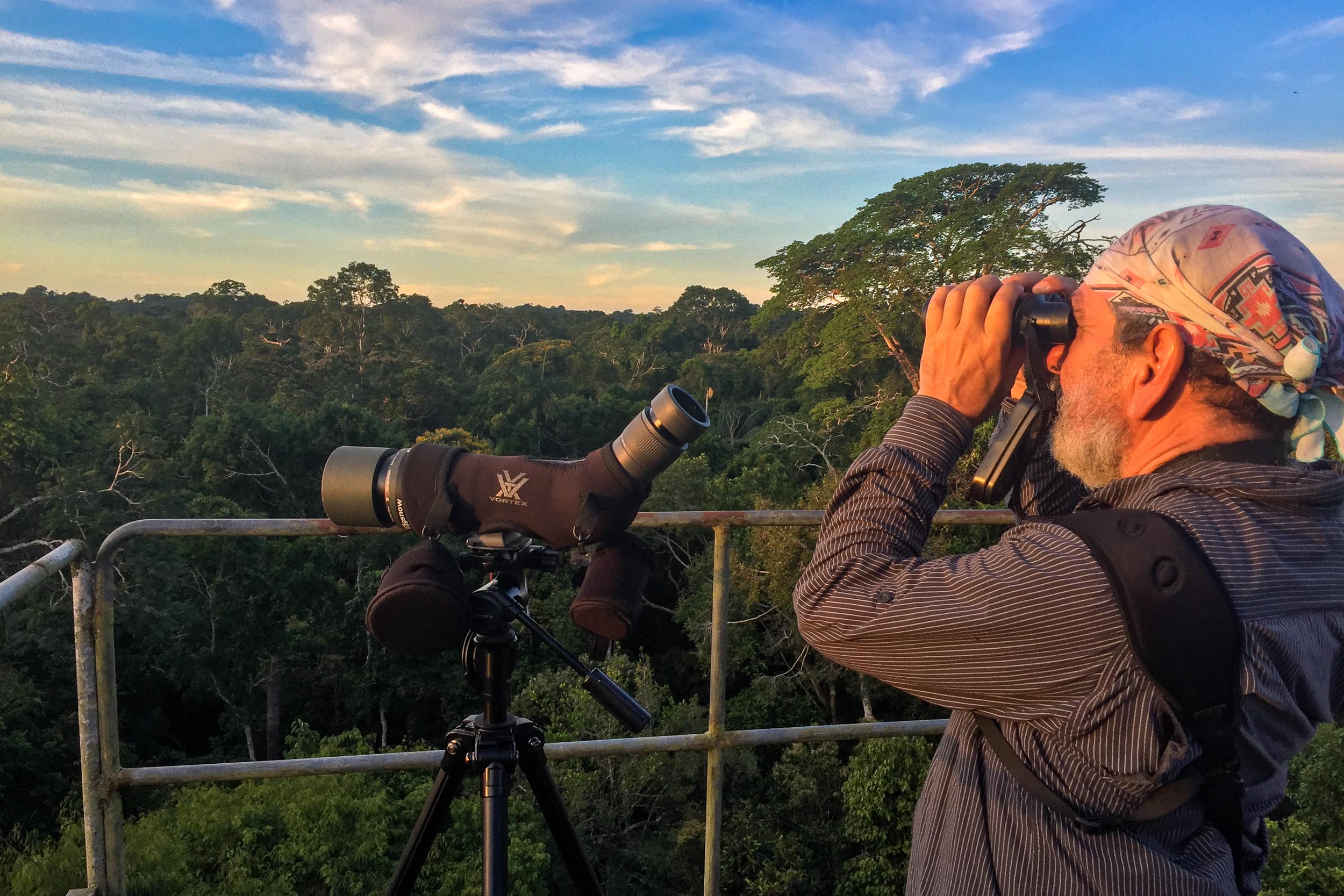The Harpy Eagle (Harpia harpyja) is a large bird of prey native to the tropical forests of Central and South America. Renowned for its impressive size, this forest eagle is one of the largest raptors in the world. Female Harpy Eagles are typically larger than males, often weighing up to twice as much. While males generally weigh between 4 and 4.8 kilograms (8.8–10.6 lbs), females can reach nearly 9 kilograms (19.8 lbs) and boast a wingspan close to two meters (6.6 feet). The eagle’s immense talons, which can measure up to 10 centimeters (3.9 inches), play a big part in its formidable reputation.
Harpy Eagle quick facts
| Common Name | Harpy Eagle |
| Scientific Name | Harpia harpyja |
| Classification | Birds – Accipitriformes |
| Average lifespan in the wild | 40 years |
| Size | 90–105 cm (3–3.4 feet) |
| Weight | 4–9 kg (8.8–19.8 lbs) |
| IUCN Red List Status | Vulnerable |

A skilled predator
Harpy Eagles are adept hunters capable of catching prey equal to their weight: they frequently catch animals weighing over 7 kilograms (15.4 lbs), including live sloths. Females excel in capturing prey mid-flight – such as adult howler monkeys and sloths weighing between 6 and 9 kilograms (13.2–19.8 lbs) – without landing! The smaller males, on the other hand, target smaller animals ranging from 0.5 to 2.5 kilograms (1.1–5.5 lbs).
Females typically transport prey weighing between 1 and 4 kilograms (2.2–8.8 lbs) back to their nests, while males average about 1.5 kilograms (3.3 lbs). Using their stealth, they hunt by perching among trees and launching swift, precise attacks on their prey.

Territorial behavior and habitat
Harpy Eagles are highly territorial and defend their domain from intruders, including other Harpy Eagles. Their loud, distinctive cries help mark their territory and communicate with others, and these vocalizations often aid Amazonian guides in spotting the majestic birds perched in the canopy from observation towers.

Preferring humid, pristine tropical forests, Harpy Eagles are most commonly found in the Amazon Basin. Historical populations also inhabited the western foothills of the Andes and tropical regions like Chocó and Darién.

Threats and conservation
Due to deforestation and habitat destruction, Harpy Eagles are classified as a vulnerable species. They are protected under international legislation, and conservation efforts are underway to preserve their populations and habitats.
Similar species and cultural significance

The Harpy Eagle holds significant cultural value. Revered by Indigenous peoples of South America, it is the national bird of Panama. A Harpy Eagle named “Hope” has become a symbol for climate change awareness. It has inspired mythical creatures such as Fawkes the phoenix in Harry Potter and the giant Haast’s Eagle in documentary films. Its image appears on Venezuelan and Guyanese banknotes, numerous stamps, and a Zeiss spotting scope named in its honor. The French Gendarmerie Nationale named their anti-illegal gold mining operation in French Guiana “Operation Harpy” in tribute to this bird.
A unique and awe-inspiring encounter
Encountering a Harpy Eagle is a powerful and emotional experience. Its robust body, gray-blue upper plumage, white underside, erect feather crest, mighty talons, and piercing gaze make it a truly unique bird.

Discover the Harpy Eagle on our birdwatching tours.


